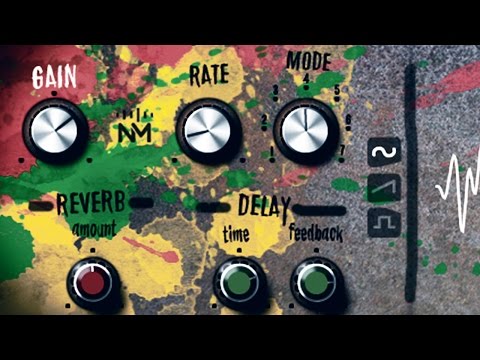


If you were to do this in your DAW, start by setting up your effects on auxiliary sends and make sure you have a place to return them. With the stereo console output going back into Pro Tools where I can print the final mix. I have my outboard racks of delays, reverbs and effects, and the returns of those are routed back into my desk. My typical dub mixing setup consists of a multitrack session on my SSL 6K desk with individual groups for drums, keys, guitars, bass, vocals, and the extras horns or effects, or percussion. Tip #2: Set Up Your Session for Creative Control When you’re doing stuff through a console or a MIDI controller hitting mutes and pulling faders, turning knobs etc., you do stuff by accident but it sounds great! That’s really when dub comes into its own-when there’s mistakes.

Otherwise it isn’t from instinct it’s from thought, which is why dubs made with edits and automation sound cool, but they’re pretty predictable because it’s kind of the way you’d expect it to happen.

To make a real dub, it’s got to be done with your hands. That element of pulling faders down or muting groups to reshape the actual arrangement of the song, in combination with effects to make those specific changes pleasant to the human ear-that is the essence of doing dub. There’s an element of doing these things at exactly the right point to reshape the multitrack mix. In some capacity you’re being tactile with an instrument to express some sort of emotion, whether you’re a guitarist, pianist, or a drummer, you’re using your hands. What’s the one thing in common that most (if not all) musicians use to express their emotion via their instrument? Inside a DAW, you can create a mix that you typically wouldn’t be able to do on a console. The amount of times I’ve done an amazing beginning section in one mix, chopped off the rest of it and then done an amazing ending on another mix-thanks to technology, I can edit those together. You experiment, you try stuff I’ll typically do like 3, 4 or 5 passes until I’ve kind of got all the effects in the manner I want. Those two things combined are what makes dub. The second part involves the reshaping of the multitrack mix into a new piece of music. The first part consists of effects-which create all of the textures, cool sounds, depth, space, and the weird stuff. Grammy nominated Dub mixing engineer Daniel Boyle (Lee ‘Scratch’ Perry, Max Romeo, Eek A Mouse, The Congos) serves up six tips to help set up your sessions for adding dub-style effects and processing to your mixes.ĭub mixing is an art form where the engineer becomes the musician and you use your console and the effects as an instrument in a way that typically a mixer or an engineer wouldn’t do.


 0 kommentar(er)
0 kommentar(er)
